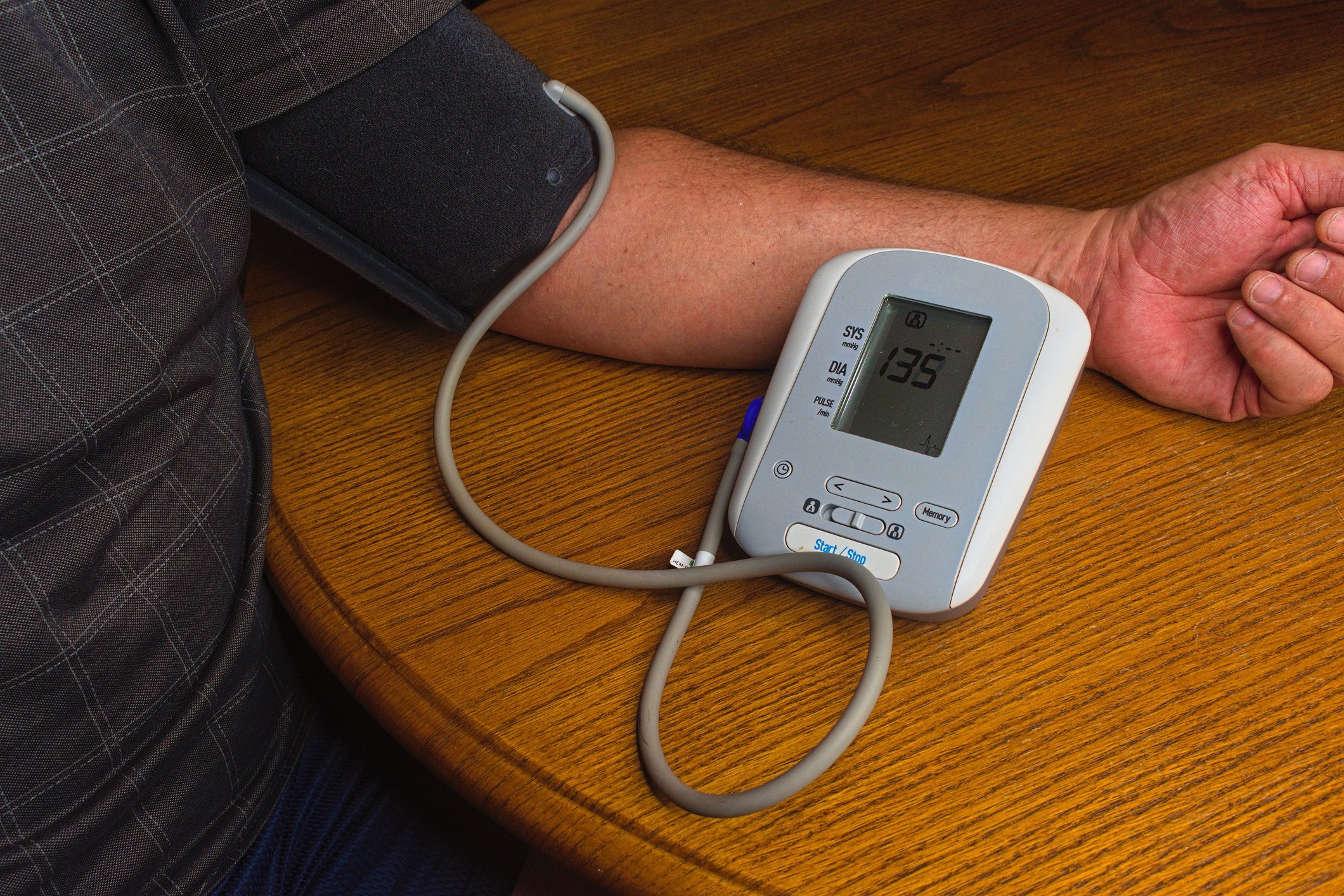What Is the Best Medication for Chronic Pain?
By Jillian Foglesong Stabile, MD, FAAFP, DABOM
September 18, 2025

What Is the Best Medication for Chronic Pain?
Chronic pain is an extremely common condition that affects more than 25% of people in the United States. Any pain that lasts more than three to six months may be considered chronic. Chronic pain significantly impacts quality of life, as well as increases the risk of disability and even death. Deciding what is the best pain medication for chronic pain can be challenging. This guide will discuss various medications for chronic pain and provide key information you need to know.
What is the best medication for chronic pain: Long-term pain medication list
Many potential medications can be used long-term for chronic pain.
| Medication | Drug Class | Common Dosage (Adults) | WellRx Savings Card |
| Acetaminophen | Non-opioid analgesic | 350-1000 mg up to 4x daily | Link Out |
| Ibuprofen | NSAID | 200-800 mg 3x daily | Link Out |
| Naproxen | NSAID | 375-500 mg 2x daily | Link Out |
| Meloxicam | NSAID | 7.5-15 mg daily | Link Out |
| Ketorolac | NSAID | 10 mg every 4–6 hrs | Link Out |
| Diclofenac | NSAID | 50–75 mg 2x daily (also topical gel) | Link Out |
| Tramadol | Mixed-mechanism opioid | 50 mg up to 4x daily | Link Out |
| Hydrocodone (w/ acetaminophen) | Opioid | 5–10 mg up to 6x daily | Link Out |
| Oxycodone | Opioid | 5–10 mg up to 6x daily | Link Out |
| Hydromorphone | Opioid | 2–4 mg up to 6x daily | Link Out |
| Duloxetine | SNRI | 30–120 mg daily | Link Out |
| Buprenorphine | Opioid partial agonist-antagonist | Multiple forms/doses | Link Out |
| Oxycontin | Opioid | 5–30 mg 1–2x daily | Link Out |
| Fentanyl | Opioid | 50–100 mcg | Link Out |
| Methadone | Opioid | Depends on use | Link Out |
| Morphine | Opioid | 10–20 mg up to 6x daily | Link Out |
| Gabapentin | Anticonvulsant | 100–1200 mg 3x daily | Link Out |
| Amitriptyline | Tricyclic antidepressant | 50–100 mg daily | Link Out |
| Nortriptyline | Tricyclic antidepressant | 25–150 mg daily | Link Out |
| Fluoxetine | SSRI | 10–60 mg daily | Link Out |
| Sertraline | SSRI | 25–200 mg daily | Link Out |
| Paroxetine | SSRI | 10–50 mg daily | Link Out |
| Carbamazepine | Anticonvulsant | 200–1200 mg daily | Link Out |
| Pregabalin | Anticonvulsant | 50–225 mg 2x daily | Link Out |
| Topiramate | Anticonvulsant | 25–100 mg 2x daily | Link Out |
| Celecoxib | Cox-2 inhibitor | 200 mg daily | Link Out |
| Codeine (± acetaminophen) | Opioid | 30–60 mg up to 4x daily | Link Out |
Your healthcare provider may recommend other medications for pain depending on the cause. They will help you make the decision about which medication may work best for you.
Who needs to take chronic pain medications?
Many people may need to take chronic pain medications. The best medication for long-term pain relief may depend on the type of pain you are experiencing.
Neuropathic pain
Neuropathic pain is often called nerve pain. This pain can be caused by various conditions, including diabetes, shingles, and other neurological disorders affecting the brain and other parts of the nervous system. Neuropathic pain is often unprovoked and described as stabbing, tingling, or like electric shocks. It may occur with numbness.
Nociceptive pain
Nociceptive pain occurs after an injury, such as scraping your skin. This type of pain is often characterized by aching, throbbing, stabbing, cramping, or burning sensations. The stretching or irritation of peripheral nerves causes this type of pain. This pain can occur anywhere in the body, including in internal organs. Sometimes, the area where the pain is felt is not the site of injury, such as gallbladder pain radiating to the shoulder.
Musculoskeletal pain
Musculoskeletal pain originates from the muscles, tendons, and bones. Musculoskeletal pain can include neuropathic pain and nociceptive pain. Common causes of musculoskeletal pain include arthritis, sprains, and fractures, among others. Musculoskeletal pain is one of the most common types of chronic pain and results in a significant amount of sick leave and disability. It is also a common reason why people take chronic pain medication.
Inflammatory pain
Inflammatory pain originates from inflammation. This kind of pain can be due to trauma or other tissue irritation. Inflammation can be acute or chronic. After an injury, inflammation can help mobilize body resources to aid in healing the injury. Chronic inflammation can result from several different causes.
Types of drugs for chronic pain
Choosing the best pain medication for chronic pain depends on the type of pain. Several classes of drugs may be used for different types of pain.
Acetaminophen
Acetaminophen can be used for acute and chronic pain. You can also take it alone or in combination with other classes of medication for chronic pain. While acetaminophen is often used for chronic pain, a 2016 study found that there is no substantial evidence that acetaminophen is effective for chronic pain.
Nonsteroidal anti-inflammatory drugs (NSAIDs)
The Food and Drug Administration (FDA) has approved NSAIDs for pain, fever, and inflammation. NSAIDs have both anti-pain and anti-inflammatory properties, which makes them a common choice for treating musculoskeletal and inflammatory pain. A 2022 study in Science Translational Medicine found that decreasing the inflammatory response in acute injury might increase the risk of developing chronic pain. NSAIDs are associated with stomach inflammation, kidney disease, and heart problems in some cases, so if you are taking these medications chronically, your healthcare provider may recommend monitoring.
Anticonvulsants
Providers often use anticonvulsants or anti-seizure medications to treat chronic pain. These medications are most commonly used for conditions such as neuropathic pain, migraine, and fibromyalgia. Multiple medicines in this class are frequently used and have been shown to be effective for the management of chronic neuropathic pain.
Opioids
When many people think of medications for long-term pain relief, they often think of opioid pain medications. Opioids have been associated with benefits for chronic pain over placebo, but they are not without risk, and studies have not shown them to be superior to non-opioid medications. Using opioids for chronic pain increases the risk of abuse of the drugs as well as the risk of the body becoming physically dependent on the medicines. Opioids are used to treat a wide variety of chronic pain conditions. In 2019, it was estimated that 22.1% of people with chronic pain had been on an opioid prescription in the prior 3 months.
Tramadol
Tramadol is not an opioid but acts on the opioid receptors in the brain. This medication is often used as both an acute and chronic pain medication. Tramadol is generally prescribed for moderate to severe pain. Tramadol may be associated with fewer adverse side effects than opioid medications.
Buprenorphine
Buprenorphine acts on opioid receptors but is not an opioid. It has been introduced as an alternative to opioid medications for chronic pain because of its potential to provide strong pain relief for chronic pain with less potential for abuse. Buprenorphine can be administered in a film or a patch. Buprenorphine may cause nausea, vomiting, and constipation, but it is effective in providing long-term pain relief for many people.
Tricyclic antidepressants
Tricyclic antidepressants are often used for neuropathic pain, though their use is decreasing due to the potential for side effects, especially in older people. These medications can cause dry mouth, drowsiness, and blurred vision.
SSRIs
Selective serotonin reuptake inhibitors (SSRIs) are often used for pain associated with fibromyalgia, as well as depression and anxiety frequently associated with chronic pain. SSRIs have been shown to have some positive effects on chronic pain, though not all studies show improvement.
SNRIs
Selective norepinephrine reuptake inhibitors (SNRIs) are another type of antidepressant used to treat chronic pain. They are most often used for musculoskeletal pain, fibromyalgia, and neuropathic pain. These medications may take up to 8-14 weeks to titrate to an optimal dose, but have been shown to have efficacy for the treatment of chronic pain.
Is any pain medication for chronic pain available over the counter?
Acetaminophen and several NSAIDs are available over-the-counter. You should not use these medications chronically before talking with your healthcare provider to make sure that it is safe for you to take them that way.
How fast do medications for chronic pain usually take to work?
There is a wide range of how quickly chronic pain medications work. Some drugs, such as NSAIDs or opioids, may work quickly, starting to take effect as soon as 30-60 minutes. Other medications, such as antidepressants (TCAs, SSRIs, and SNRIs), may take several weeks to work.
How to take pain meds for chronic pain
Your healthcare provider or pharmacist will make recommendations about whether to take your pain meds for chronic pain with or without food. Medicines to treat chronic pain and those to treat acute pain, for that matter, should not be taken more often than prescribed. Taking medications more often than prescribed increases the risk of side effects as well as the risk of becoming dependent on or even addicted to medication.
Natural remedies for long-term pain relief
Chronic pain due to inflammation may respond to natural treatments for inflammation. Several foods offer benefits that can help reduce inflammation and potentially alleviate pain. These foods include:
- Some fruits
- Leafy greens
- Olive oil
- Nuts
- Fatty fishes
Several supplements have also been shown to have benefits for pain and inflammation, including:
- Omega-3 fatty acids
- White willow bark
- Curcumin (turmeric)
- Green tea
- Maritime pine bark
- Boswellia serrata resin (Frankincense)
- Resveratrol
- Cat’s claw
- Capsaicin
Before starting any supplement for inflammation or pain, you should consult with your healthcare provider to make sure that these supplements will not interact with your other medications.
How to prevent chronic pain
The best way to treat chronic pain is to prevent it in the first place. While it is not always possible to prevent chronic pain from developing, there are some steps that you can take to reduce the chances of acute pain becoming chronic. The International Association for the Study of Pain suggests several proactive steps to prevent chronic pain:
- Maintain a healthy weight
- Get regular exercise
- Eat a healthy diet
- Avoid or stop unhealthy habits such as alcohol use and smoking
- Change positions when working
- Control your stress levels
- Consider counseling
- Get moving early if appropriate
- Consider physical therapy
- Consult a pain specialist early
- Consider alternative therapies such as yoga, acupuncture, or biofeedback therapy
Preventing chronic pain often requires being proactive and facing the pain head-on with early medical consultation.
Get your free ScriptSave® WellRx account and start saving on your medications
Medications are expensive, and their costs can vary significantly between pharmacies, even those located across the street. If you are experiencing a painful condition or if your healthcare provider has recommended medication, you may be wondering how to save money on your prescriptions. Consider visiting us at WellRx. Some people save a little. Some people save a lot. Prices vary across zip codes. Even pharmacies across the street from each other can have huge price differences. Our goal is to bring transparency to prescription medication pricing, enabling consumers to keep more money in their pockets. ScriptSave has been helping consumers save on their prescriptions for 25 years.
FAQs related to meds for chronic pain
What is the safest pain medication for long-term use?
Deciding what is the safest pain medication for long-term use depends on several factors unique to the individual. Opioid-sparing medications such as buprenorphine and SNRIs have been shown to be effective for the treatment of chronic pain with less risk of dependence and abuse.
How to take Cymbalta?
Cymbalta is the brand name for duloxetine. This medication is used to treat depression, anxiety, and nerve pain. Cymbalta is best taken at the same time each day and may be taken with or without food. The medication comes in a capsule and cannot be crushed or chewed. It may be taken once or twice a day. If you forget a dose, you can take it when you remember, unless it is close to time for the next dose.
Can you take tramadol with acetaminophen, ibuprofen, or aspirin?
You can take tramadol with other medications, such as acetaminophen, ibuprofen, or Tylenol.
Can you take ibuprofen 800 mg with tramadol 50 mg?
Yes, you can take ibuprofen 800 mg with tramadol 50 mg.
How long does oxycodone stay in your system?
Oxycodone comes in both long-acting and short-acting forms. The long-acting forms last up to 12 hours, while short-acting forms often last 3-6 hours. When taken for chronic pain, stable levels of oxycodone are in the blood within 24 to 36 hours. Drug testing can detect oxycodone for 24 hours to as long as 90 days, depending on which testing method is used.
Which painkiller is best for long-term use?
When considering what the best pain medication is for chronic pain and which painkiller is best for long-term use, your healthcare provider will consider how you respond to medications as well as your unique health needs. Non-opioid medications carry less risk of dependence, addiction, and abuse than opioid medications, so many people feel that these are better options for chronic pain.
How do I safely start and stop chronic pain medicines?
Your healthcare provider will help you determine how best to start and stop chronic pain medicines. Some medications take time to build up in your system and may also need to be tapered slowly because stopping them suddenly can cause withdrawal symptoms. If your healthcare provider determines that your chronic pain medicines need to be stopped, your healthcare provider will provide you with a schedule for how to decrease the medications slowly. Your healthcare provider may recommend alternative treatments to help you stop taking chronic pain medications.
How do you deal with unbearable chronic pain?
Chronic pain is complex and often requires a multifactorial approach to treatment. In addition to medication, pain treatment may include physical or occupational therapy, lifestyle changes, exercise therapy, weight and stress management. Complementary therapies such as massage, biofeedback, acupuncture, and meditation may also play a role in pain management. Your healthcare provider may also determine that treatments such as steroid injections, nerve stimulation (TENS units), and Botox injections may play a role in treating chronic pain conditions.
What is the most painful chronic pain?
Everyone experiences pain differently, which makes it difficult to determine what the most painful type of chronic pain is. Some of the chronic conditions that have often been described as being particularly painful include complex regional pain syndrome, trigeminal neuralgia, cluster headaches, postherpetic neuralgia, central pain syndrome, and sciatica. Ultimately, the most painful chronic pain conditions are the ones that significantly impact the quality of life and the ability of the individual to function. Other conditions, such as depression, may also influence the amount of pain that each individual experiences.
References
https://www.ncbi.nlm.nih.gov/books/NBK553030/
https://www.mayoclinic.org/drugs-supplements/carbamazepine-oral-route/description/drg-20062739
https://www.mayoclinic.org/chronic-pain-medication-decisions/art-20360371
https://www.drugs.com/condition/chronic-pain.html
https://my.clevelandclinic.org/health/diseases/15833-neuropathic-pain
https://my.clevelandclinic.org/health/symptoms/nociceptive-pain
https://pmc.ncbi.nlm.nih.gov/articles/PMC8119532/
https://pmc.ncbi.nlm.nih.gov/articles/PMC10569336/
https://pubmed.ncbi.nlm.nih.gov/26572078/
https://www.ncbi.nlm.nih.gov/books/NBK482369/
https://www.ncbi.nlm.nih.gov/books/NBK547742/
https://pmc.ncbi.nlm.nih.gov/articles/PMC6160277/
https://pmc.ncbi.nlm.nih.gov/articles/PMC6469538/
https://www.frontiersin.org/journals/pharmacology/articles/10.3389/fphar.2016.00276/full
https://onlinelibrary.wiley.com/doi/abs/10.1002/9781119701170.ch17
https://www.ncbi.nlm.nih.gov/books/NBK556253/
https://www.nejm.org/doi/full/10.1056/NEJMra1507771
https://www.uptodate.com/contents/use-of-opioids-in-the-management-of-chronic-pain-in-adults
https://pmc.ncbi.nlm.nih.gov/articles/PMC10463795/
https://www.sciencedirect.com/science/article/pii/S0753332218373694
https://pmc.ncbi.nlm.nih.gov/articles/PMC8567798/
https://pmc.ncbi.nlm.nih.gov/articles/PMC10169288/
https://www.pharmacytimes.com/view/tricyclic-antidepressants-in-neuropathic-pain-the-good-the-bad-and-the-potentially-ugly
https://pmc.ncbi.nlm.nih.gov/articles/PMC4947493/
https://pmc.ncbi.nlm.nih.gov/articles/PMC9239373/
https://www.health.harvard.edu/staying-healthy/foods-that-fight-inflammation
https://pmc.ncbi.nlm.nih.gov/articles/PMC3011108/
https://www.medicalnewstoday.com/articles/how-does-pain-medicine-work#opioids
https://www.iasp-pain.org/resources/fact-sheets/preventing-pain-an-introduction/
https://www.health.harvard.edu/pain/stopping-pain-before-it-turns-chronic
https://www.nhs.uk/medicines/duloxetine/how-and-when-to-take-duloxetine/
https://www.nhs.uk/medicines/tramadol/taking-tramadol-with-other-medicines-and-herbal-supplements
https://www.serenitygrove.com/news/how-long-does-oxycodone-stay-in-your-system
https://my.clevelandclinic.org/health/diseases/4798-chronic-pain
Recommended Articles









